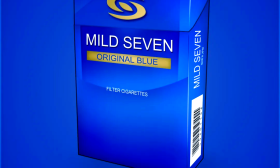Title: Smoking Impairs Healing of Recurrent Aphthous Ulcers: Mechanisms and Clinical Implications
Recurrent aphthous ulcers (RAUs), commonly known as canker sores, are among the most prevalent oral mucosal conditions, affecting approximately 20% of the general population. These painful, recurring lesions significantly impact quality of life, interfering with speaking, eating, and swallowing. While the exact etiology remains multifactorial and not entirely elucidated, a plethora of local, systemic, immunological, and genetic factors are known contributors. Among the various lifestyle factors investigated, smoking presents a paradoxical relationship with oral health. Interestingly, smoking is associated with a reduced incidence of RAUs, potentially due to the keratinizing effect of tobacco smoke on the oral mucosa. However, for individuals who smoke and do develop these ulcers, a growing body of evidence suggests that smoking severely compromises the healing quality of recurrent aphthous ulcers, leading to a significantly reduced healing quality score—a composite measure assessing pain duration, healing time, size reduction, and frequency of recurrence.
Pathophysiology #HealingProcess
To understand smoking's detrimental impact, one must first appreciate the complex biological orchestration of oral wound healing. Optimal healing of an RAU is a finely tuned process involving four overlapping phases: hemostasis, inflammation, proliferation, and remodeling. This process requires a delicate balance of inflammatory mediators, growth factors, angiogenesis (formation of new blood vessels), and the synthesis of new extracellular matrix components.
Smoking introduces a potent cocktail of over 7,000 chemicals, including nicotine, carbon monoxide, hydrogen cyanide, and numerous carcinogens, into the oral environment. This toxic mixture disrupts the healing process at virtually every stage.
1. Impaired Vasculature and Tissue Hypoxia:Nicotine is a potent vasoconstrictor, causing the narrowing of small blood vessels and microvasculature in the oral mucosa. This dramatically reduces blood flow to the ulcer site. Consequently, the delivery of essential oxygen, nutrients, immune cells, and growth factors to the wounded tissue is severely limited. Concurrently, carbon monoxide from smoke binds to hemoglobin with an affinity over 200 times greater than oxygen, forming carboxyhemoglobin. This further reduces the oxygen-carrying capacity of the blood, creating a state of tissue hypoxia at the ulcer site. Oxygen is crucial for cellular metabolism, energy production, and particularly for the function of fibroblasts (cells that build new tissue) and leukocytes (white blood cells that fight infection). Hypoxia stalls the proliferative phase of healing and impairs the body's ability to mount an effective initial inflammatory response.
2. Dysregulation of Inflammatory and Immune Response:The initial inflammatory phase is crucial for clearing debris and pathogens. However, smoking induces a state of chronic systemic inflammation while simultaneously impairing the local immune response at the wound site. Tobacco smoke alters the function of neutrophils and macrophages—key players in phagocytosis and the release of cytokines and growth factors. Studies have shown that smokers have a suppressed chemotactic response, meaning these immune cells are less effectively recruited to the ulcer area. Furthermore, smoking disrupts the balance of pro-inflammatory and anti-inflammatory cytokines. It can lead to an overproduction of destructive enzymes like matrix metalloproteinases (MMPs), which break down the extracellular matrix faster than it can be rebuilt, effectively degrading the nascent healing tissue and enlarging the ulcer.
3. Cytotoxicity and Direct Tissue Damage:The heat and toxins in cigarette smoke cause direct physical and chemical damage to the oral mucosal cells. This cytotoxicity can exacerbate the initial ulcer formation and damage the surrounding epithelial cells that are attempting to migrate and proliferate to cover the wound (a process called epithelialization). Tar and other compounds can also irritate the mucosa, potentially prolonging the inflammatory stimulus and delaying the transition to the proliferative phase.

4. Impact on Fibroblasts and Collagen Production:Fibroblasts are the workhorses of the proliferative phase, responsible for synthesizing collagen, the main structural protein in new tissue. Research has consistently demonstrated that nicotine and other smoke constituents inhibit fibroblast proliferation, migration, and collagen synthesis. The collagen produced in smokers is often of poorer quality and disorganized, leading to weaker, less resilient scar tissue. For an RAU, this translates to a fragile new epithelial layer that is more prone to breakdown and delayed strengthening.
ClinicalScoring #HealingQuality
The "healing quality score" for RAUs is a clinical tool that moves beyond simple binary metrics like "healed" or "not healed." It incorporates multidimensional factors to provide a holistic view of the healing experience:
- Healing Time: The number of days from ulcer onset to complete re-epithelialization.
- Pain Intensity and Duration: Measured using visual analog scales (VAS) over the ulcer's lifespan.
- Ulcer Size: Rate of reduction in diameter.
- Frequency of Recurrence: The interval between healing and the appearance of a new ulcer.
Smokers consistently demonstrate poorer scores across these parameters. Clinically, this manifests as:
- Prolonged Healing Duration: Ulcers in smokers often take several days longer to heal completely compared to non-smokers.
- Sustained Peak Pain: The intense pain associated with RAUs persists for a longer period due to prolonged inflammation and exposure of nerve endings.
- Larger Ulcer Size: The impaired healing can sometimes result in ulcers that grow larger or maintain their size for an extended period before beginning to heal.
- Potential for More Severe Recurrences: The chronic impairment of the mucosal environment may lead to more severe outbreaks.
Conclusion
The paradoxical relationship between smoking and RAU incidence should not be misinterpreted as a protective benefit. For the smoker who suffers from these painful lesions, the habit acts as a significant impediment to recovery. By inducing vasoconstriction, hypoxia, immune dysfunction, and direct cellular toxicity, smoking sabotages the intricate biological processes required for efficient and high-quality wound healing. Consequently, the healing quality score—encompassing pain, duration, and tissue integrity—is markedly reduced. This evidence underscores a critical public health message: smoking cessation should be a cornerstone of management strategies for patients suffering from recurrent aphthous ulcers. Improving systemic vascular health and removing the local toxic insults of tobacco can dramatically improve the oral wound healing environment, reducing suffering and improving the quality of life for affected individuals.











